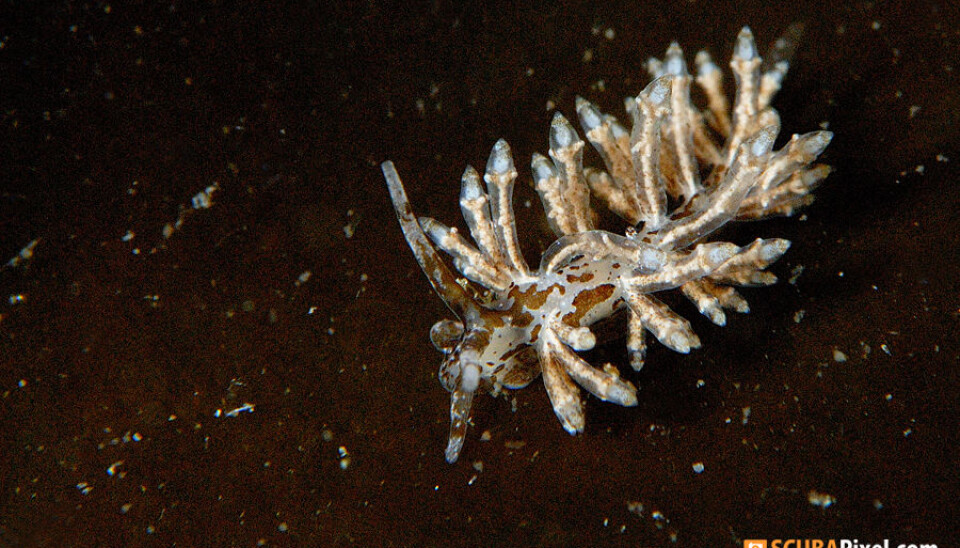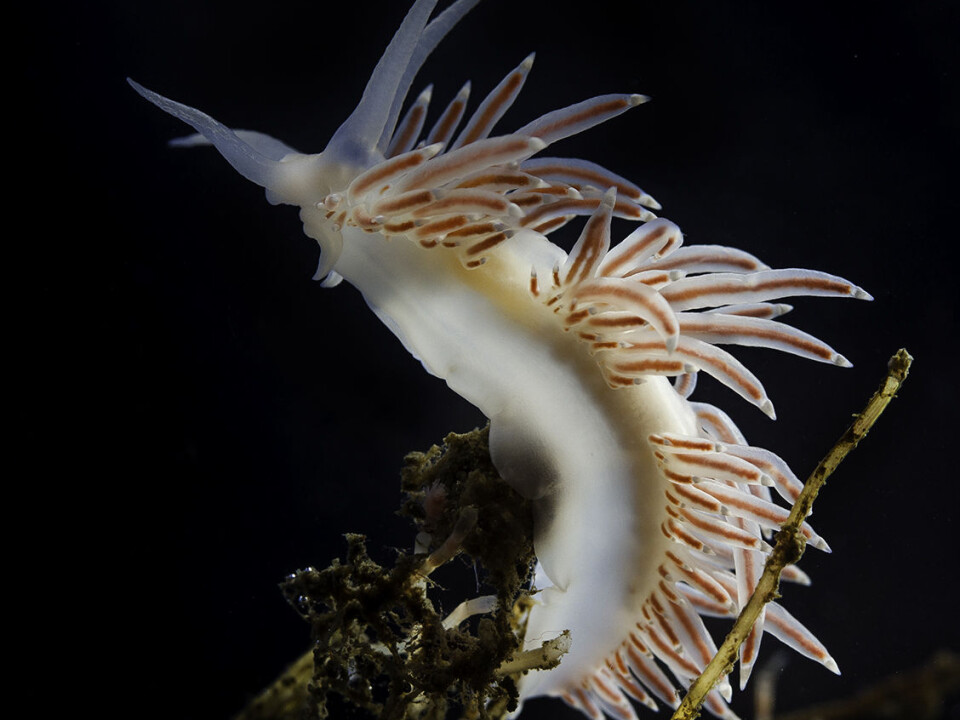An article from Norwegian SciTech News at NTNU

New sea slug species found in northern waters
Scientists have recently found a species of sea slug that has apparently made its way north from the Mediterranean Sea. These mobile nudibranchs are carnivores that eat coral and jellyfish.
Denne artikkelen er over ti år gammel og kan inneholde utdatert informasjon.
They look like creatures from the tropics, but are abundant in Norwegian waters, both at the shoreline and on the seafloor. At first glance they are not so easy to spot, but with a little practice you can find them pretty easily.
Nudibranchs, unencumbered by a shell, are often called sea butterflies for their brilliant color variations and spectacular forms that can resemble wings.
Nudibranch dance. (Video: Per Harald Olsen / NTNU)
Amazing find

Approximately 90 different nudibranch species have been mapped in Norway, with some 60 of these commonly found between the littoral and kelp forest zones. Over the past five years, researchers at the NTNU University Museum in Trondheim have found six species new to Norway.
During a research trip in Sogn og Fjordane county, scientists discovered another new species of nudibranch sea slug – Eubranchus doriae. This species was originally described as from the Mediterranean Sea, and was previously reported as rare in the British Isles.
“We are amazed to suddenly find this species in our waters,” says NTNU marine biologist Jussi Evertsen.
Appearance
Eubranchus doriae is a small species that does not grow much beyond 6-8 mm. Characteristic of the species are intestines in the dorsal tentacles, which form cruciform nodules on their backs. These are often clearly visible through the translucent tentacles.
“The rest of the body is almost white with spots that are either brown or olive green. The oral tentacles have a dark brown band, while the dorsal tentacles feature a white tip with a gray-brown band,” says Evertsen.
Carnivores that eat most anything
Most nudibranchs appear to be delicate and pretty creatures that almost dance in the water. But appearances are deceptive- these creatures are voracious predators that eat most anything. Their menu includes eggs of other sea slug species, sponges, bryozoans and cnidarians, such as corals and jellyfish.
Although coloration among the various nudibranchs is quite similar, they exhibit many different forms. Their egg laying patterns also vary widely, ranging from spirals to lace-like borders and circles. Nudibranchs lay millions of eggs to ensure the highest possible survival rate of their young.
Protected by poison
Nudibranchs do a good job at taking care of themselves. Since they don’t have a protective shell, they have developed alternative defense mechanisms.
One of these mechanisms is their brilliant coloration. Some nudibranchs are bright yellow, signaling to their surroundings that danger is afoot and fooling would-be predators into erroneously believing that they are poisonous.
Toxic slime-covered capsules
The most powerful protection lies in the nudibranch diet. The cnidarians that they eat, such as corals, anemones and jellyfish, contain poisonous stinging cells. Nudibranchs are immune to the stinging cells and store them in their dorsal tentacles, allowing the toxin to provide a natural defense against their enemies.
Researchers believe that nudibranchs encase these stinging cells in mucous capsules when they ingest them. The toxic cells can then pass through their digestion without being released.
Swollen hands
“In our Norwegian waters we don’t have many species that are directly toxic. Unsavory yes, but the real toxic species are only found in tropical waters. But we have encountered a species of nudibranchs that eat the coral dead man’s fingers (Alcyonium digitatum). The substances in the mucus cause a surprisingly strong allergic reaction. Hold it in your hand long enough, and it will swell and look more like a baseball glove than a hand. So it’s best to steer away from this particular species,” Evertsen says.
































